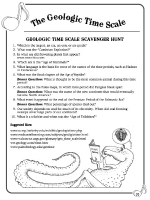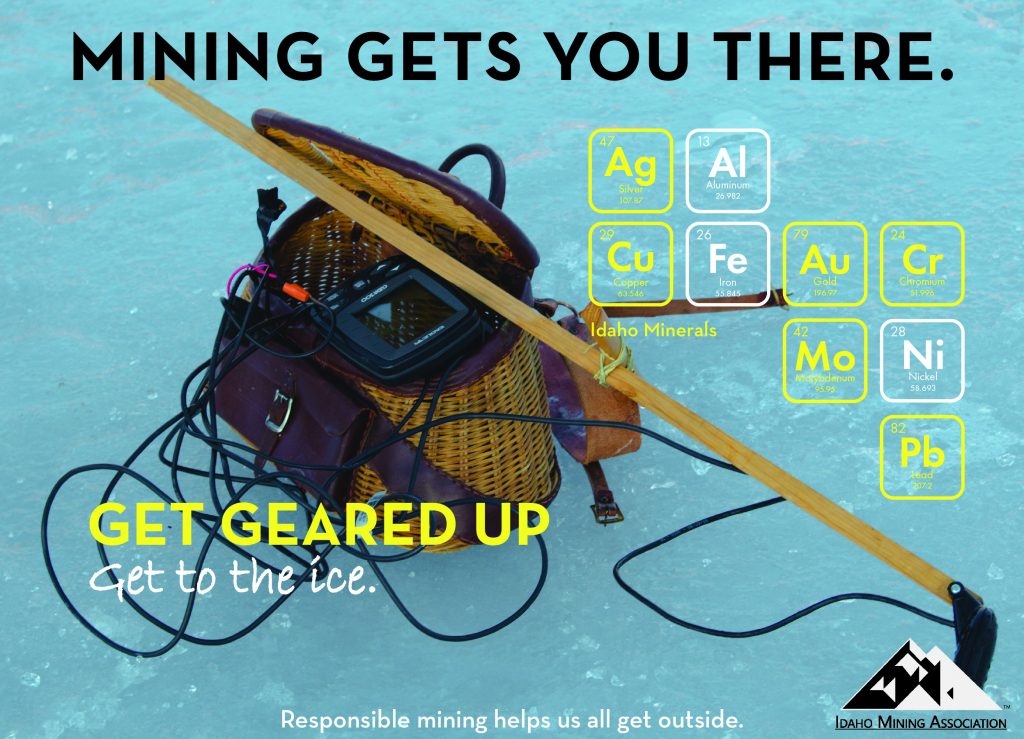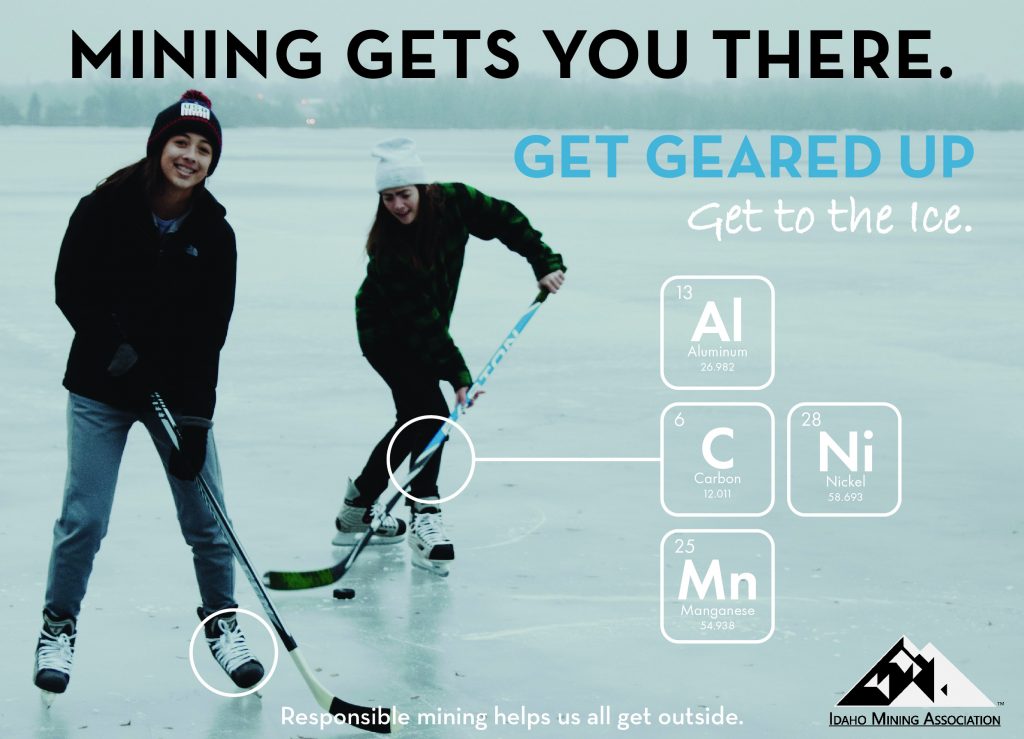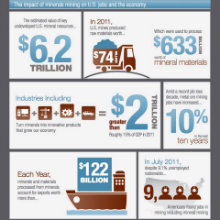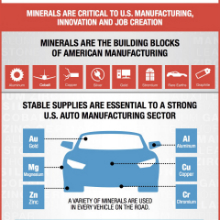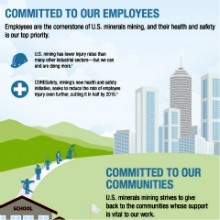Helping Teach Idaho Students
Are you a teacher who wants to help Idaho students understand mining, minerals, or geology? We are happy to help. Check out this link from the National Energy Foundation for information about teacher workshops, curriculum, and more. You can also email us for more information at ima@mineidaho.com or click on the images below to download handouts.
Geologic Time Scale
What’s the difference between an era, an eon and an epoch? Students can answer this and other questions using a “scavenger hunt” where they are asked to survey science websites. The purpose is to begin understanding the “time scale” of geology and how geologic formations came about.
Hard As A Rock
This handout and learning activity help students learn why some water is called “hard” as well as the approximate hardness of the water in their area. Using water from various sources, students will be asked questions about how minerals impact the scientific tests they will do in groups.
Life Of A Rock
This exercise is designed to help teach knowledge of early geologic processes, and why that knowledge is important for students who want to understand how mineral resources are formed. Students will learn the origins of rocks, how they were created and some of their uses.
Mountain Of Stone
A simple word puzzle helps students learn the vocabulary and language of mining and geology. How many can you find? Use this handout in conjunction with others on this page to develop a fun, informative lesson and help students fully understand the unique geology of Idaho.
Rock Cycle Roulette
How can various igeneous rocks with the same mineral look entirely different? Help students answer that question through role-playing, and in the process learn knowledge of early geology so they can better understand how our state’s mineral resources were formed.

Seawater Salt Mining
In explaining where salt comes from, this project helps students understand how most mineral resources can be used in many different ways. Students will observe and analyze the process of evaporation and salt extraction to better understand how we turn minerals into products.
Learn more about Idaho geology!
There are a wide variety of ways Idaho students and teachers can learn more about mining in Idaho, its history and its science. Here are some of our favorites:
Idaho Museum of Mining and Geology – Located next to the Old Penitentiary in Idaho’s Historical District, the Idaho Museum of Mining and Geology (IMMG) offers exhibits and educational programs about Idaho’s fascinating geologic history and rich mining heritage.
National Energy Foundation – Each of their customizable programs has its own unique goal but share the common mission of NEF. NEF prides itself on its ability to deliver quality programs for any partner uniquely tailored to meet their specific goals.
Idaho Geological Survey – The Idaho Geological Survey has conducted instructional field workshops for Idaho’s elementary and secondary teachers since 1986. The week-long summer workshops provide hands-on, inquiry-based instruction on geology at various field locations in the state. All materials are available online.
Idaho Commission for Libraries – LiLi offers a variety of links and book descriptions to help teachers and students interested in geology and mining in Idaho. They offer a list of videos, links and newspaper articles useful for helping people learn about our industry.
Minerals.Net – The Mineral and Gemstone Kingdom is a free informational and educational guide to rocks, minerals, gemstones, and jewelry. This site provides detailed information and excellent photos of each mineral and gemstone cataloged in their database.
Earth Science World – A service of the American Geosciences Institute, this site offers downloads and information for teachers and students interested in the geosciences. The site includes specific information on careers in mining and geology.
History of Mining in Idaho
Here is a look at the history of mining in Idaho, which has shaped the state’s political boundaries, built cities, and supplied the nation with minerals necessary for today’s modern lifestyle:
1860: Ten prospectors led by Captain E.D. Pierce enter the Nez Perce Reservation in search of gold. After a month of no luck, one of the men, Wilbur Bassett, strikes gold along Canal Gulch. This discovery sets off one of the largest migrations in American history.
1860: Within six months, prospectors from all over the west stake another 1,600 claims in Canal Gulch. They come by way of the Columbia and Snake Rivers, making Idaho one of only two states settled from west to east.
1862: Ten thousand miners pour into the Florence Basin, and the district produces more than $600,000 of gold a day based on modern prices.
1862: Prospectors discover the most significant gold mining district in Idaho – the Boise Basin.
1863: Idaho City’s population is 6,200, surpassing Portland as the largest city in the Northwest. Latecomers, finding all the good ground taken, fan out in all directions. One party finds gold along Jordan Creek in the Owyhee Mountains. There, Silver City becomes a boomtown.
1863: Creation of the Idaho Territory, and the tent city of Lewiston became the capital.
1863: Boise City is founded as a supply center for the Boise and Owyhee mining districts.
1865: Boise becomes the territorial capital.
1881: Andrew Prichard strikes gold along the North Fork of the Coeur d’Alene River creating a northward migration of miners. Fueling the rush is the Northern Pacific Railroad, which promises free gold in North Idaho for the price of a ticket on the railroad.
1882: 180,000 bushels of charcoal are produced in primitive kilns to operate the smelters.
1885: Noah Kellogg locates the Bunker Hill Mine in the Coeur d’Alene area and finds silver.
1887: A narrow gauge railroad from the mines to the old mission at Cataldo is completed. Paddle wheel riverboats take the ore from Mission Landing downstream, across Lake Coeur d’Alene to the railhead at Rathdrum, making the Coeur d’Alene River the highest navigable river in the world.
1890: The town of Burke gains worldwide attention in “Ripley’s Believe It or Not” as the town so narrow that merchants closed storefront awnings for trains to pass. The Tiger Hotel straddled the tracks, and lodgers are smoked out of their rooms when wood-burning locomotives passed underneath.
1903: Phosphate discovered in Idaho.
1908: Waterloo Mine is state’s first phosphate mine (underground mine).
1940: Bennington Canyon Mine is state’s first phosphate surface mine.
1946: J.R. Simplot develops the Gay Mine on the Fort Hall Indian Reservation.
1968: Last underground phosphate mine closes in Idaho.
1985: Coeur d’Alene mining district produces their one billionth ounce of silver. The district has also produced vast amounts of lead, zinc, and copper. Other notable mines in the Silver Valley include the Morning Star, one of the deepest mines in America; Bunker Hill, America’s largest underground mine; and the Sunshine Mine, which has produced more than 300 million ounces of silver.
1990: J.R. Simplot Company opens Smoky Canyon.
1990: FMC assumes control of the Gay Mine.
1993: Production at the Gay Mine ceases and reclamation begins.
2008: Three phosphate mines (Dry Valley, Smoky Canyon, Rasmussen Ridge) operate in Idaho.

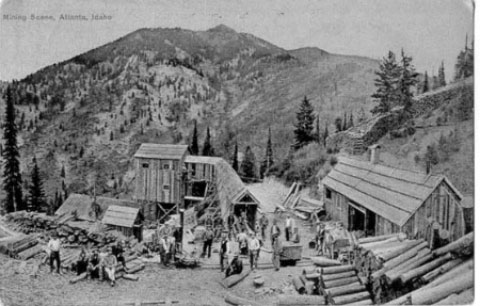

Mining Gets You There
Fact Sheets
Other Resources
IF IT CAN’T BE GROWN, IT HAS TO BE MINED
https://www.miningamerica.org/
https://mineralseducationcoalition.org/
